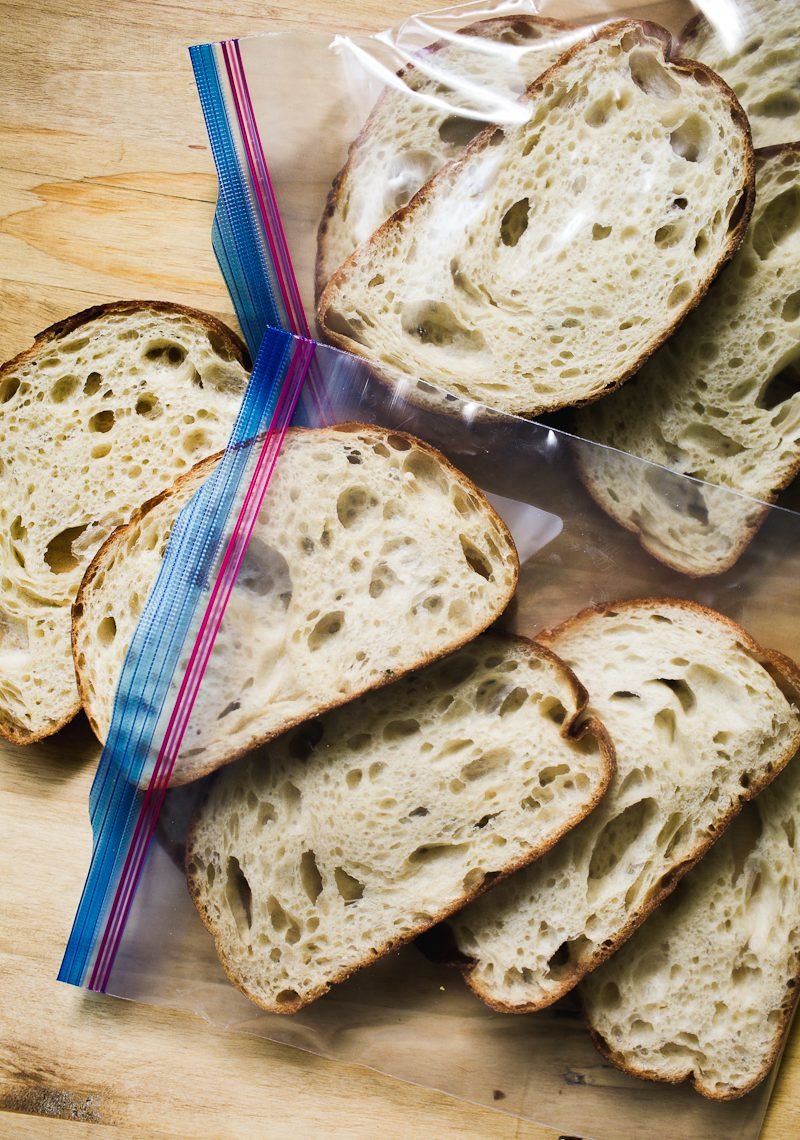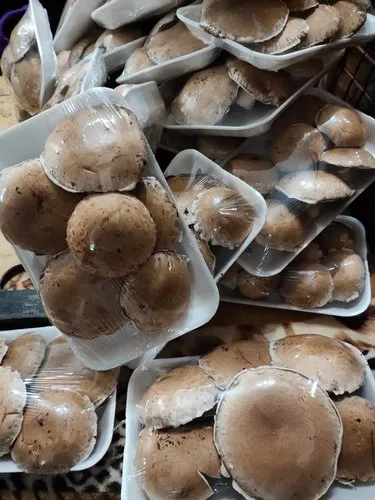Some people can’t finish their freshly baked bread the day they bake. This is why how the bread is stored plays an important part. Bread shouldn’t be left at a desk or board!
What should you do to ensure that your bread remains fresh? This article will help you safely keep bread to avoid mold, staleness, and bacteria!
There are a variety of ways to store bread made from scratch. A huge tea towel or a cotton bag to wrap it is the most popular choice for bakers. However, a bread box can also be a good option, particularly in a humid region. If you’re looking to keep your bread in storage for a long time and want to store food items in the freezer would be the ideal option.
Types of Homemade Bread
There are various types of bread and the ingredients used, and the way it’s made determines what kind of bread you get as an end result of your recipe. The method used to store homemade bread also depends on the kind of bread you’re making. to get things done faster and hassle free when trying to make bread some people also deploy bread maker machines shared here for tasty bread to enjoy with all family members.
-
Yeasted Bread:
Bread with yeast is probably the most well-known type of bread available. They can be made by kneading or not-kneaded, based on the time required and energy. This bread type has its rise due to the yeast and needs to rest for the dough, which lets the yeast grow.
It also depends on fermentation, which gives tiny bread holes when baked. The result is that yeasted bread is airy and light with smaller crumbs. Whole-wheat or white sandwich bread, ciabatta, Challah, Ciabatta, and pizza dough are just a few examples of yeasted bread.
-
Non-Yeasted Bread:
This kind of bread contains no yeast and receives its rise by consuming ingredients such as baking soda and baking powder. They have a lower grade than yeasted bread and are denser and tougher. Irish soda bread, also known as ’emergency bread ‘, and rustic bread, does not have yeast in this bread.
Furthermore, flatbreads such as pita, parathas, or rotis do not rise since they aren’t yeasted and are made into thin, round sheets. Fruit and banana bread are two other examples of bread that are not yeasted.
-
Sourdough Bread:
The bread you eat is a slow-fermented loaf made using a starter sourdough. It is made up of flour and water. It is a live culture containing bacteria that produce lactic acid.
This ferments the bread and creates the bread’s rise instead of yeast. Sourdough bread is renowned for its tart taste. They are also considered healthier bread because it is simple to digest.
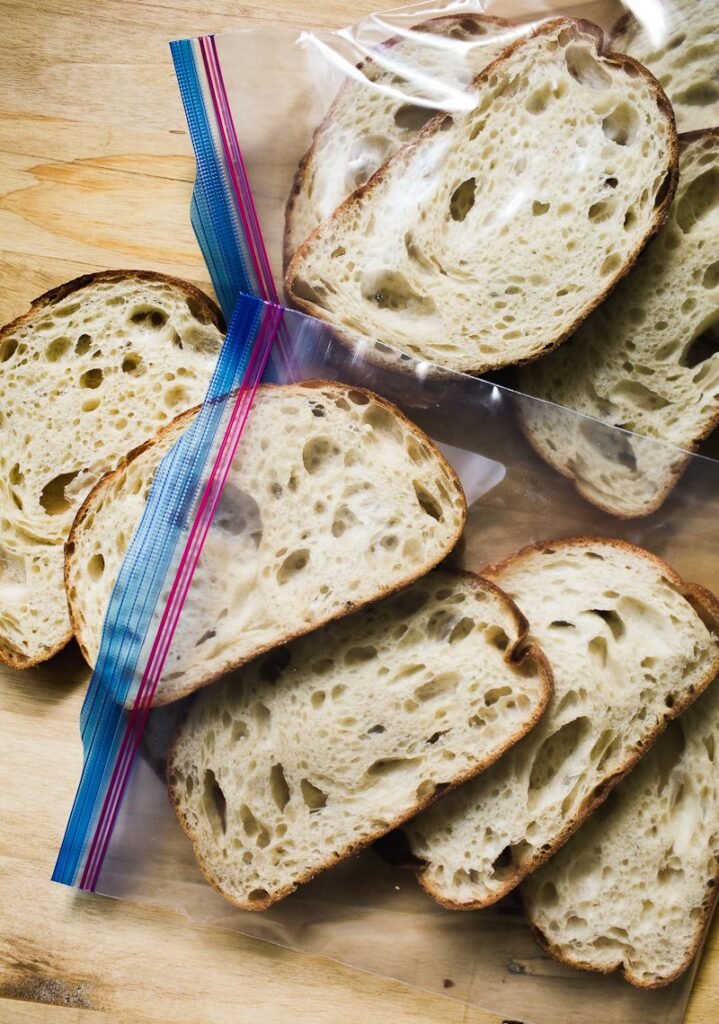
The Importance of Properly Storing Homemade Bread
Making bread at home takes time, effort and a few ingredients. Since homemade bread doesn’t include preservatives or additives like store-bought bread. You’ll have to be extra cautious when storing it to keep it from rotting for the longest time possible.
Do not store bread on the counter at room temperature for too long. Cover the loaf with a tight wrap to stop air from entering the bread’s surface and making it dry and hard, particularly on the cut sides.
4 Techniques to Keep Bread Fresh
It is possible to preserve the freshness of your bread and prolong the shelf life by shielding it from the airflow and extreme temperatures. Follow these steps and enjoy fresh bread for long-term use.
-
Cover the bread with aluminum foil
Wrapping bread with aluminum foil is an ad-hoc method of preserving bread. The aluminum foil protects your bread from direct exposure to air and staleness.
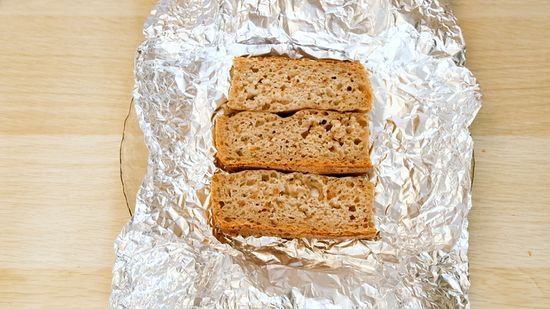
-
Put it into clear plastic.
To ensure that bread stays fresh:
- Place them in plastic baggies and press out the air.
- Place the bread in a bag made of plastic for long-term storage.
- Cover it with aluminium foil for double protection.
-
Make use of bread bags.
It is also possible to use an aluminium bread box or any other bread container to ensure that your bread is fresh. However, it is for a short time.
-
Put the bread into a plastic bag.
You could also utilize a regular plastic bag for preserving bread from drying. First, move the bread that is crusty into the bag in a paper bag, and then place it in a box for bread to keep it safe from the air.
4 Ways to Store Fresh Bread
Proper storage is crucial to ensuring that your bread will last longer. There are several options to store bread. Some are ideal for storage in short-term terms, while others work well for long-term storage. Here are some tips to ensure bread is fresh:
-
Bread box:
Bread boxes can be a fantastic storage solution for short-term storage since they’re not airtight as bags that can be resealable or containers. Also called a canister, there are various bread boxes available, such as wooden or stainless steel and metal or plastic alternatives. If you use a bread box to store your bread, you can wrap the entire loaf in aluminium foil to protect it from airflow.
-
Food storage container:
When it comes to storing leftovers, which is the primary purpose of containers for food storage, they can also be perfect for bread storage as they block air. If you’re storing many hamburger buns or a large loaf of sourdough, the size of the container is airtight and could be limited. If you’re just down to the remaining bread pieces, put them in a container for food storage and keep the bread at temperatures that are at room temperature.
-
Freezer bag:
A freezer bag offers better protection against cold than a standard plastic bag that is resealable. The bags are thicker, preventing the risk of freezing burn and properly safeguarding frozen food. Slice the bread using a cutting board, freeze each slice, or put the whole loaf in bags for freezing. The slices frozen in the freezer make toasting, reheating and defrosting much easier.
-
Reusable bags made of plastic:
A resealable plastic bag is a great way to seal moisture in and lock out air, making the bread moist. In this case, you can store your bread in a room at room temp. However, you should be aware of the bag for any excess moisture, which can cause mold. If you notice water droplets in the bag, transfer the bread into a different form of storage that is long-term.
-
Freeze Your Loaf
The loaf you freeze will remain in its original state with the crust, texture, and flavour.
Preserving your bread in the freezer will stop starch formation (retrogradation) within the loaf. You will also be able to preserve all the characteristics of a freshly baked loaf.
The most efficient method of freezing bread is inside an airtight bag. Ensure you get all air from the bag before sealing it since air can be a source of water molecules. It could cause water crystals to form, which can cause a freezer burn to your bread loaf.
In this manner, store the bread for several months. (Beyond that, it may be bitten by frost and lose its taste).
If you are tempted to eat and have another bite of bread, remove it from the bag in a plastic bag and set it in the refrigerator for 30 to 60 minutes until it is defrosted.
Suppose you’ve got a whole loaf that you want to heat; utilize the oven. Avoid the microwave in any way.
Preheat your oven to 350 Fahrenheit or 175 Celsius. The bread will be in the oven for approximately 8 minutes. Voila! Your bread from the past is the same as fresh.
How Do You Store Homemade Bread Without Plastic?
If you want to keep the bread you make without using bags or wrappers, think about investing in the bread box or ceramic container.
Bread boxes offer a non-waste and green alternative with plastic wrap or bags made of plastic. A staple in the household, the bread box (also called the bread box), is the container that keeps bread and baked goods in good condition.
Ward advised buying a bread container or ceramic container with a hermetic (airtight) seal; otherwise, your bread won’t last as long. If you’ve cut or sliced the bread, place it on its side to preserve the not protected part.
Can You Leave Freshly Baked Bread Out Overnight?
The type of bread you’ve chosen to bake, you can let it sit for a few hours on an oven rack or inside the bread box. It is essential to store it in a suitable place to ensure its freshness. In most cases, as long as you don’t cut into the loaf’s crust, it will remain fresh until the next day.
Although bread baked at home and left out overnight is still delicious, it will not have the same texture or softness as freshly baked bread.
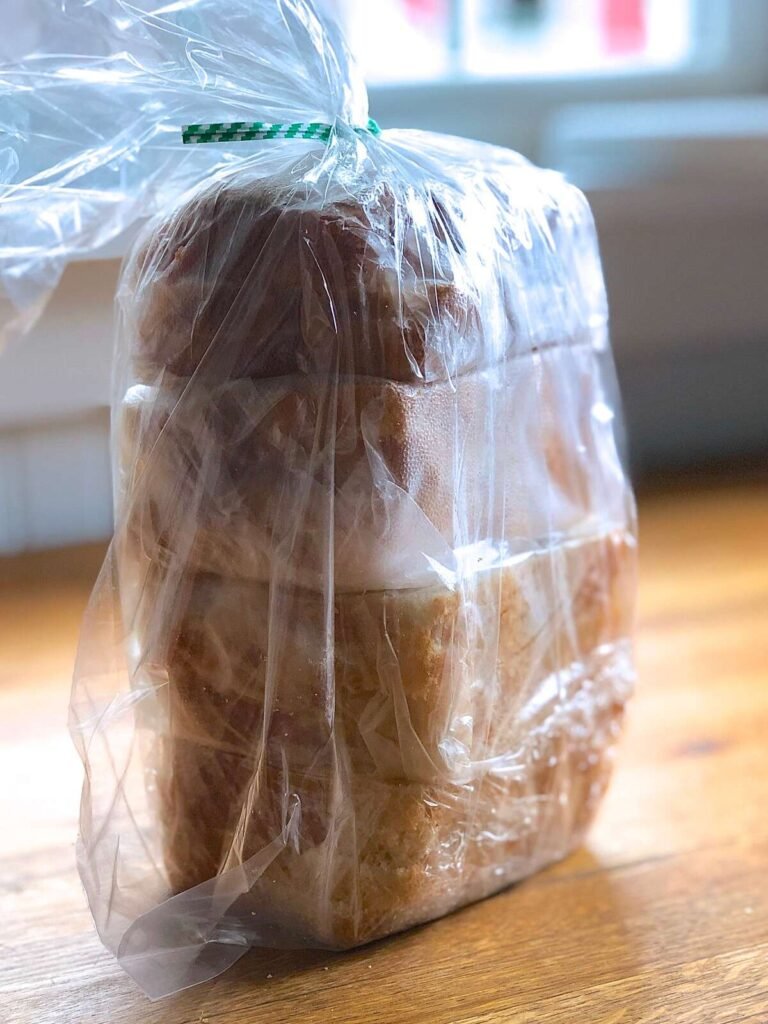
FAQ’s
Can I store bread in the fridge?
Do not store your bread in the refrigerator. The starch molecules found in bread break down very quickly at low temperatures. This can cause the bread to go stale more quickly when refrigerated. Loaves purchased from stores should be stored in airtight bags at room temp instead of in the refrigerator.
Should I keep bread in a bag?
Plastic and paper bags help reduce the drying and staleness of bread. This is great for keeping soft bread soft. However, if you plan to keep the bread for a long time, it’s wise to choose another storage method. Paper and plastic bags do not allow air to circulate within them, increasing the chance of mold growth.
Should bread be stored in the dark?
The most efficient way to preserve bread is to store it at room temperatures in a dry, dark and cool area such as a pantry drawer and bread boxes. We also suggest keeping the bread sealed in its original container because this will allow it to keep its moisture.


We are baking experts and connoisseur of food with decades of cooking experience to cook and bake a variety of scrumptious food item to awaken the taste buds of people who eat our baked delights.
With our gumption, alacrity along with astute acumen to pick the authentic and best quality ingredients from across the world to make the scrumptious recipes which soothes the taste buds of eater has made him the name on which people can count on when it comes to cooking advice, world class meals and cuisines native to the different cities of world.
Our chefs unique ability improvise and make baked dishes with different raw produce and ingredients in less time which are delicious and relished by the guests has made kooky bakes leader in the arena of baking and serving mouth watering food.
